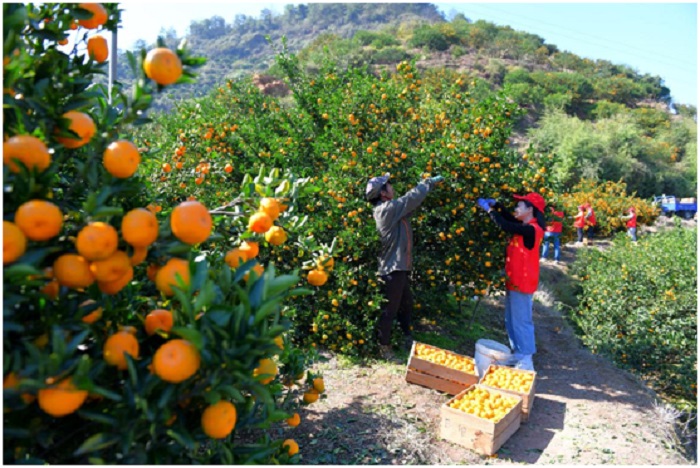



Boasting high quality, high brand awareness, and good reputation, agricultural products with geographical indications (GIs) ride the wave of consumption upgrading in China and satisfy the needs of Chinese consumers who desire a high-quality life.
Cao Junzhe, a resident in Fengtai district of Beijing, has bought Nanfeng mandarin orange, a local specialty and national GI product of Nanfeng county, Fuzhou city, east China’s Jiangxi province, many times. Besides enjoying it himself, he also sent the fruit to his parents who live in another city.
Although the prices of GI products are higher than those of ordinary agricultural products, he thinks they are worth buying, according to Cao, who said he has always preferred GI agricultural products since he realized the unique advantages of such products.
In fact, GI products in China, such as Zhangqiu green onion, Yantai apple, Anji white tea, and Nanfeng mandarin orange, have become the choices for many consumers in China today.
The name of a GI product is often the combination of the name of the region where the product is produced and the common name of the product. The names of GI products indicate their places of origin and superior quality.
In recent years, China has continuously enhanced the protection of GI agricultural products. Data showed that since the country implemented programs to protect GI agricultural products, more than 3,000 kinds of GI agricultural products have been cultivated and registered across the country.
These products have been accepted and recognized by more and more consumers and have relatively stable consumer groups in the market.
GI products are the part of characteristic agriculture that has the most brand value and represent the direction in which agricultural products can develop toward the goal of becoming high-end goods, said Li Xuelin, head of Yunnan Academy of Agricultural Sciences.
The rapid development of e-commerce in China’s rural areas has created a broader market space for GI agricultural products.
Data from China’s Ministry of Commerce (MOC) revealed that the online retail sales in rural areas of China hit 1.79 trillion yuan (about $282 billion) in 2020, which was 5.1 times that in 2015 and signaled a growth rate far higher than that of the country’s e-commerce on the whole.
In 2020, China’s online retail sales of agricultural products reached 415.89 billion yuan, accounting for 10 percent of the country’s total retail sales of agricultural products.
E-commerce in rural areas has smoothened the sales channels for GI agricultural products, shortened the buyer decision process, and improved the popularity of such products.
GI agricultural products are not only goods, but also drivers of the development of regional industrial chain. Inspired by the development model of GI agricultural products, many regions in China have created the model of “GI + cultural tourism”, aiming to promote the integration and complementarity of GI, cultural and creative industries, as well as other related industries.
Meizhou city in south China’s Guangdong province, Qingchuan county in Guangyuan city of southwest China’s Sichuan province, and Chishui city in southwest China’s Guizhou province have deeply integrated GI agricultural products into rural tourism. By boosting the business of B&Bs, rolling out tourism products, building agricultural brands, and developing characteristic agriculture and leisure agriculture, they ensure tourists not only enjoy delicious food but also have fun.
The advantages of GI agricultural products, namely unique resources and cultural appeal, have stimulated the vitality of rural development.
Experts believe that besides fruits and vegetables, the range of GI agricultural products will be further expanded to various links of the entire industrial chain, including highly processed products.


The Humanitarian Service Diamond Awards has.
A Chinese Company, Inner Galaxy Steel.


The Programme Coordinator, Regulatory, Compliance and.


A Non-Governmental Organization (NGO), Committee for.
The Trustfund Pensions Limited has chided.


The House of Representatives Committee on.
The China General Chamber of Commerce.


Senator Chuka Utazi who represented Enugu.


An Abuja based Legal Practitioner, Ugochukwu.


The African business community in Yiwu,.
Leave a Comment